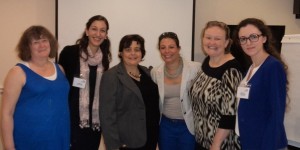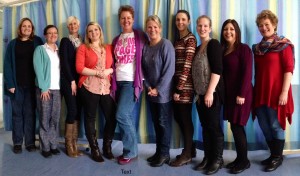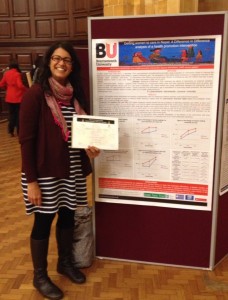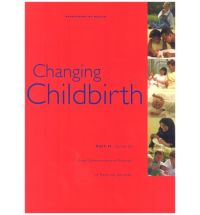Grange-over-Sands in Lancashire was once again a beautiful setting from 15th-17th June for one of the most inspirational midwifery research conferences. Attracting a significant international attendance from eminent researchers, clinicians and user representatives from as far afield as Australia, China, Canada, Brazil and across Europe (many regular attendees), the conference is now in its 10th year. Hosted by Professor Soo Downe and her team from UCLAN, it brings together researcher across all maternity professions, to present and debate work primarily relating to physiological birth. Two members of CMMPH were presenting (and tweeting!):
Professor Vanora Hundley discussed ‘Do midwives need to be more media savvy?’, a presentation created with Professor Edwin van Teijlingen and Ann Luce, based on a previous FoL public debate at BU relating to the role media plays in creating fear in childbirth https://research.bournemouth.ac.uk/engagement/fear-in-childbirth-are-the-media-responsible/ . She highlighted the need for midwives to be more aware of how to work with the media in order to harness the power to present positive messages, as well as understanding impact on women and health care providers. A paper on this presentation is accessible from: http://eprints.bournemouth.ac.uk/21600/
Dr Jenny Hall presented as part of a symposium with midwifery colleagues from Malta on an ongoing educational project relating to promotion of physiological birth in Malta. Malta has one of the highest Caesarean section rates in Europe and the team have been working together to develop midwives confidence in facilitating physiological birth as well as supporting them to educate women and families.
All delegates also received a copy of the book ‘Roar behind the silence: why kindness, compassion and respect matter in maternity care’, that includes chapters by two BU authors: Dr Jenny Hall and Consultant midwife, Katherine Gutteridge. ( see http://blogs.bournemouth.ac.uk/research/2015/02/28/stop-the-fear-and-embrace-birth/ for further information)
As usual the conference provided extensive opportunity for networking and developing links for future collaboration in a considerably relaxing environment.
A tweet storify and photographs of the whole conference are available which includes contribution from BU researchers:
https://storify.com/SagefemmeSB/normal-labour-birth-10th-research-conference
https://animoto.com/play/M21BCHDHihSqkH3LdxU0hw






 maternity report. The session, funded by the Wellcome Trust, was held at the Royal College of Obstetricians and Gynaecologists in London – an appropriate place given the balance of power at the time of the report. BU Professors Vanora Hundley and Edwin van Teijlingen were invited to attend as part of the selected audience at the session.
maternity report. The session, funded by the Wellcome Trust, was held at the Royal College of Obstetricians and Gynaecologists in London – an appropriate place given the balance of power at the time of the report. BU Professors Vanora Hundley and Edwin van Teijlingen were invited to attend as part of the selected audience at the session.












 Fourth INRC Symposium: From Clinical Applications to Neuro-Inspired Computation
Fourth INRC Symposium: From Clinical Applications to Neuro-Inspired Computation Writing policy briefs
Writing policy briefs Upholding Excellence: The Concordat to Support Research Integrity
Upholding Excellence: The Concordat to Support Research Integrity Today’s Documentation Will Serve Tomorrow’s Justice
Today’s Documentation Will Serve Tomorrow’s Justice ECR Funding Open Call: Research Culture & Community Grant – Application Deadline Friday 12 December
ECR Funding Open Call: Research Culture & Community Grant – Application Deadline Friday 12 December MSCA Postdoctoral Fellowships 2025 Call
MSCA Postdoctoral Fellowships 2025 Call ERC Advanced Grant 2025 Webinar
ERC Advanced Grant 2025 Webinar Horizon Europe Work Programme 2025 Published
Horizon Europe Work Programme 2025 Published Horizon Europe 2025 Work Programme pre-Published
Horizon Europe 2025 Work Programme pre-Published Update on UKRO services
Update on UKRO services European research project exploring use of ‘virtual twins’ to better manage metabolic associated fatty liver disease
European research project exploring use of ‘virtual twins’ to better manage metabolic associated fatty liver disease